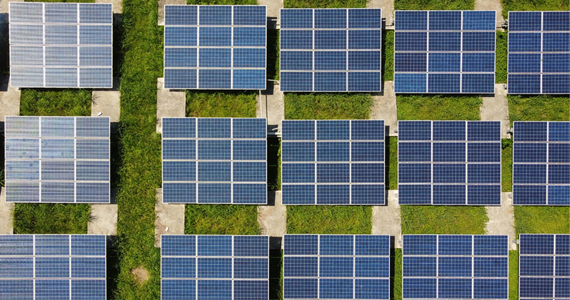The coming twelve months are shaping as another landmark year for the energy industry in Australia as the country wrestles with continuing volatility in electricity prices driven primarily by the ongoing war in the Ukraine and its impact on feedstock prices such as gas and coal.
Among the significant events that will mark 2023 are the closure of AGL’s Liddell coal-fired power station in the Hunter Valley and the establishment of the country’s first Renewable Energy Zone that seek to encourage private investment to replace the lost generation capacity.
But it will be the policy response from federal and state governments that will be critical to shaping how the resulting energy price volatility is ultimately felt by households, businesses and investors. The federal government’s proposed policy to cap gas prices1 should provide some short-term relief for energy users, but could impact investors’ views about the stability of Australia’s regulatory landscape.

New disclosure rules for businesses, tightened benchmarks for super funds, the NSW state election and interventionist government policies will likely reward a cautious investment approach.
And overriding all is the staggering demand for renewable generation, storage and transmission that is likely to provide huge opportunities for investors in the energy transformation.
Here are some of the key themes in energy for 2023 – and some thoughts on how investors can take best advantage of the opportunities available.
The shift away from coal accelerates
In April 2023, we will see the final closure of the Liddell coal-fired power station after some 50 years as the backbone of NSW’s electricity system and ahead of the site being converted into a low carbon industrial energy hub.
April’s closure has been coming for seven years but the decline in power supply when the turbines stop has the potential to trigger further electricity price volatility and potentially higher prices in NSW.
The NSW government’s capping of coal prices at $125/tonne2 for electricity production is expected to save households $230/year on power bills. The 18-month solution should also benefit businesses during this expected period of continued volatility in wholesale electricity prices.
Renewable Energy Zones take off
Importantly, 2023 will see the outcome of the first bidding process for NSW’s renewable energy zones (REZs), five new regions designated for the accelerated installation of utility scale solar, wind and batteries.
The bid process is the first of its kind in Australia and will act as a pathfinder project for renewable investment across Australia.
NSW’s renewable energy zones are a critical piece of the energy transition puzzle.
Essentially, the goal is to build generation, storage and transmission that connects to the existing electricity system and replaces the coal-fired generation being removed from the energy market.
The five renewable energy zones are part of an energy roadmap anticipated to deliver $32 billion in private sector investment over the next decade3.
Endeavour Energy, in which AMP Capital manages a material stake, is part of a consortium participating in the first bid.
The new approach should mean renewables come to market in a more co-ordinated way in coming years rather than being subject to constraints imposed by the transmission network companies.
The key for renewable energy investors is this means more projects are likely to come online quicker than before.
NSW is also pioneering renewable generation auctions to go with the renewable energy zone developments which will help to set a price floor for renewable energy generation, effectively underwriting the development of new capacity.
This should also accelerate the renewables build out.
Regulatory response the key
But amid the excitement of the investment boom in renewables, there is still much unknown about the year ahead that could pose risks for investors.
At a headline level, one high profile risk is simply understanding the effectiveness and impact of the government’s policy response to high energy prices.
There are a number of policy initiatives governments around Australia have introduced or are proposing:
-
the Federal Government’s 12-month emergency gas price cap to be set at $12/GJ4 on new wholesale gas sales by east coast producers, which could become permanent;
-
the NSW and Queensland Governments’ price caps for coal used for electricity generation at $125/tonne;
-
the Victorian Government’s plans to revive the State Electricity Commission of Victoria as a public provider of electricity; and
-
if the NSW opposition is elected in March 2023, plans to bring energy supply back into state government hands.
There is much to play out in these policies that seek to cap energy prices, and for infrastructure investors can create uncertainty about whether planned projects will generate their promised returns, which creates a new layer of risk to consider.
There are also some seemingly unintended consequences of regulatory decisions that investors need to be aware of.
The Australian Prudential Regulation Authority introduced a benchmark return for superannuation funds investing in unlisted infrastructure assets.
But the benchmark — based on global data provided by Morgan Stanley Capital International — is higher than the regulated return for many Australian energy infrastructure assets, regulated by the Australian Energy Regulator.
The benchmark’s introduction has seen local superannuation funds merging with larger superannuation funds or being forced to sell out of these kinds of regulated assets, which will ultimately mean more foreign ownership. It is yet unclear how the federal government’s review into the Your Future, Your Super measures, will further impact investment decisions.
Businesses face new disclosure rules
Commercial and industrial energy users are already seeking solutions to lower their carbon emissions in the face of pressure from shareholders and this will only intensify amid new reporting rules being considered by the Federal Government.
Treasury is developing an internationally-aligned, Australian climate risk disclosure framework. A new climate risk disclosure framework in Australia will allow investors and other stakeholders to better understand the climate risks and opportunities faced by businesses — and should ultimately accelerate the shift to renewables across industry.
In line with modern slavery laws that have an obligation for businesses to examine their supply chains, climate-risk disclosure rules will also likely affect smaller businesses that supply to the bigger corporations covered by the reporting framework.
Households and businesses turn to batteries
Households and businesses are bracing for another year of volatile and rising energy bills — and responding with more and more rooftop solar.
Some 30 per cent of private dwellings already have rooftop solar installed5 and the story over the next twelve months is likely to be increasing focus on installing residential batteries to capture the solar panels’ power generation.
Businesses with rooftop space will increasingly also install solar and seek to utilise batteries to manage their peak energy requirements.
This is where the concept of virtual power plants is taking off — networking hundreds of home and business rooftop solar installations and batteries together so they can be centrally co-ordinated to better manage peaks and troughs in supply and demand.
AMP Capital’s Evergen is a leading provider of virtual power plant systems.
Investment outlook
So, how should investors best position themselves in 2023?
Fundamentally, investment in renewables will continue – the road to net zero means low carbon energy assets are needed now. In our view, this provides great opportunity for investors.
The year will also be characterised by more renewable development businesses changing hands. Late in 2022, we saw wind farm developer CWP Renewables sold for $4 billion to Andrew Forrest’s Squadron Energy that will put the spotlight on the value of other renewables ventures.
The trick for investors will be separating the best assets from the early-stage, greenfield opportunities.
In New Zealand, where AMP Capital is invested in Powerco, a regulated network business, further sector consolidation is expected following the sale of Eastland Network. We expect further opportunities in adjacent infrastructure sectors such as smaller scale renewable generation assets, renewable energy zones, as well as telco fibre and mobile towers.
Australia and New Zealand are still facing inflation and a tight labour market that is making it a challenge to bring new assets to market. The collapse of construction giant Clough Group is a symptom of the tough market conditions.
In our opinion, there is a real question mark over how the industry finds the human capital and resources to build out the renewables required — this is a theme that will play out over the next decade.
This potent combination of investment opportunity and risk means the critical path for investors is in choosing the right managers — and making sure you are working with strong, credible partners.
1. https://www.minister.industry.gov.au/ministers/husic/media-releases/responsible-and-meaningful-action-gas-prices
2. https://www.afr.com/politics/feds-hand-nsw-4-7b-sweetener-to-push-coal-price-cap-over-line-20221220-p5c7v6
3. https://www.energy.nsw.gov.au/nsw-plans-and-progress/government-strategies-and-frameworks/nsw-electricity-strategy
4. https://minister.dcceew.gov.au/bowen/media-releases/joint-media-release-gas-price-cap-take-effect
5. https://www.energycouncil.com.au/media/0sflqp0d/australian-energy-council-solar-report_q3-2022.pdf
Source: AMP January 2022
Important:
This information is provided by AMP Life Limited. It is general information only and hasn’t taken your circumstances into account. It’s important to consider your particular circumstances and the relevant Product Disclosure Statement or Terms and Conditions, available by calling 02 6947 2866, before deciding what’s right for you.
All information in this article is subject to change without notice. Although the information is from sources considered reliable, AMP and our company do not guarantee that it is accurate or complete. You should not rely upon it and should seek professional advice before making any financial decision. Except where liability under any statute cannot be excluded, AMP and our company do not accept any liability for any resulting loss or damage of the reader or any other person. Any links have been provided for information purposes only and will take you to external websites. Note: Our company does not endorse and is not responsible for the accuracy of the contents/information contained within the linked site(s) accessible from this page.
